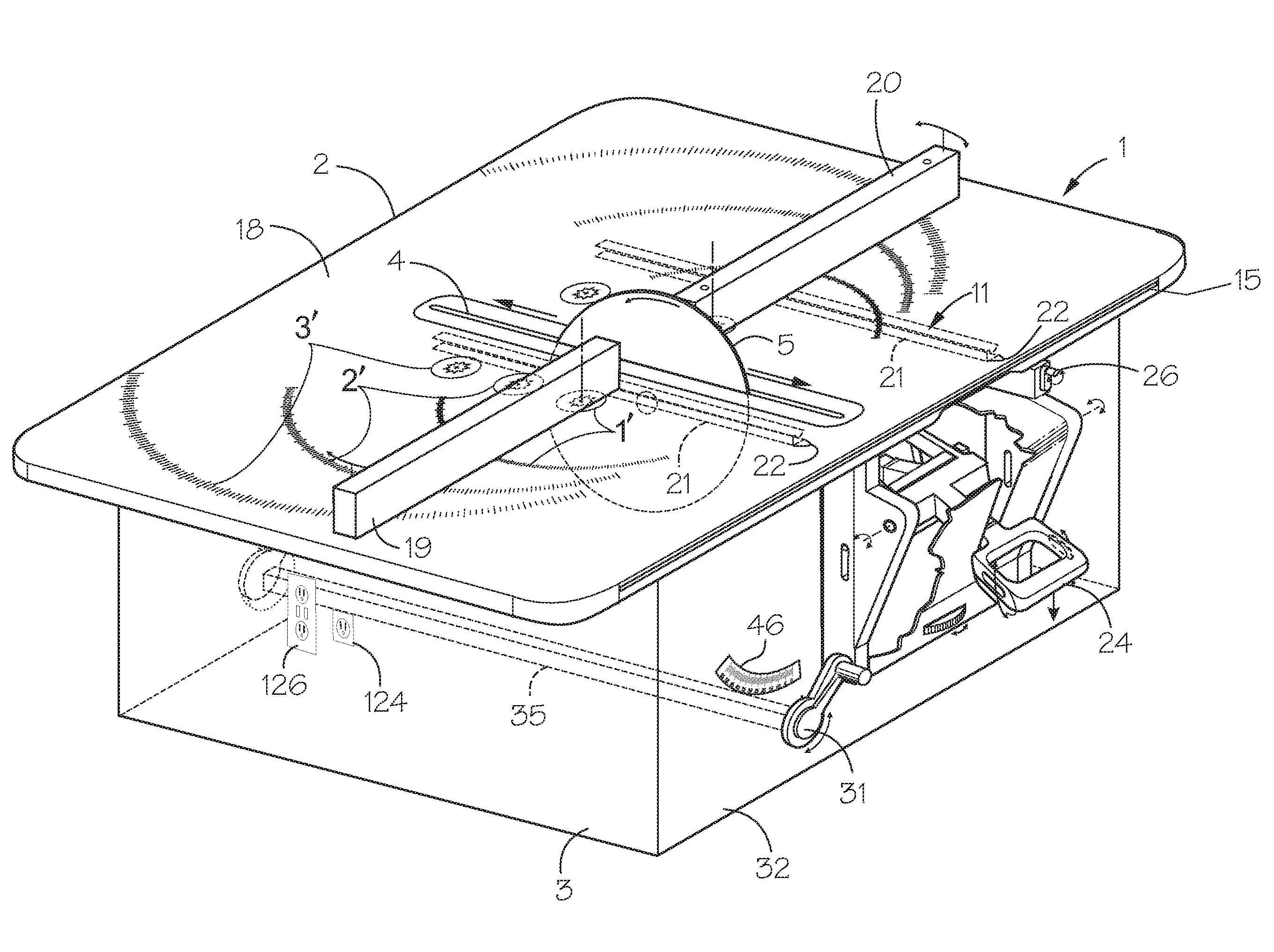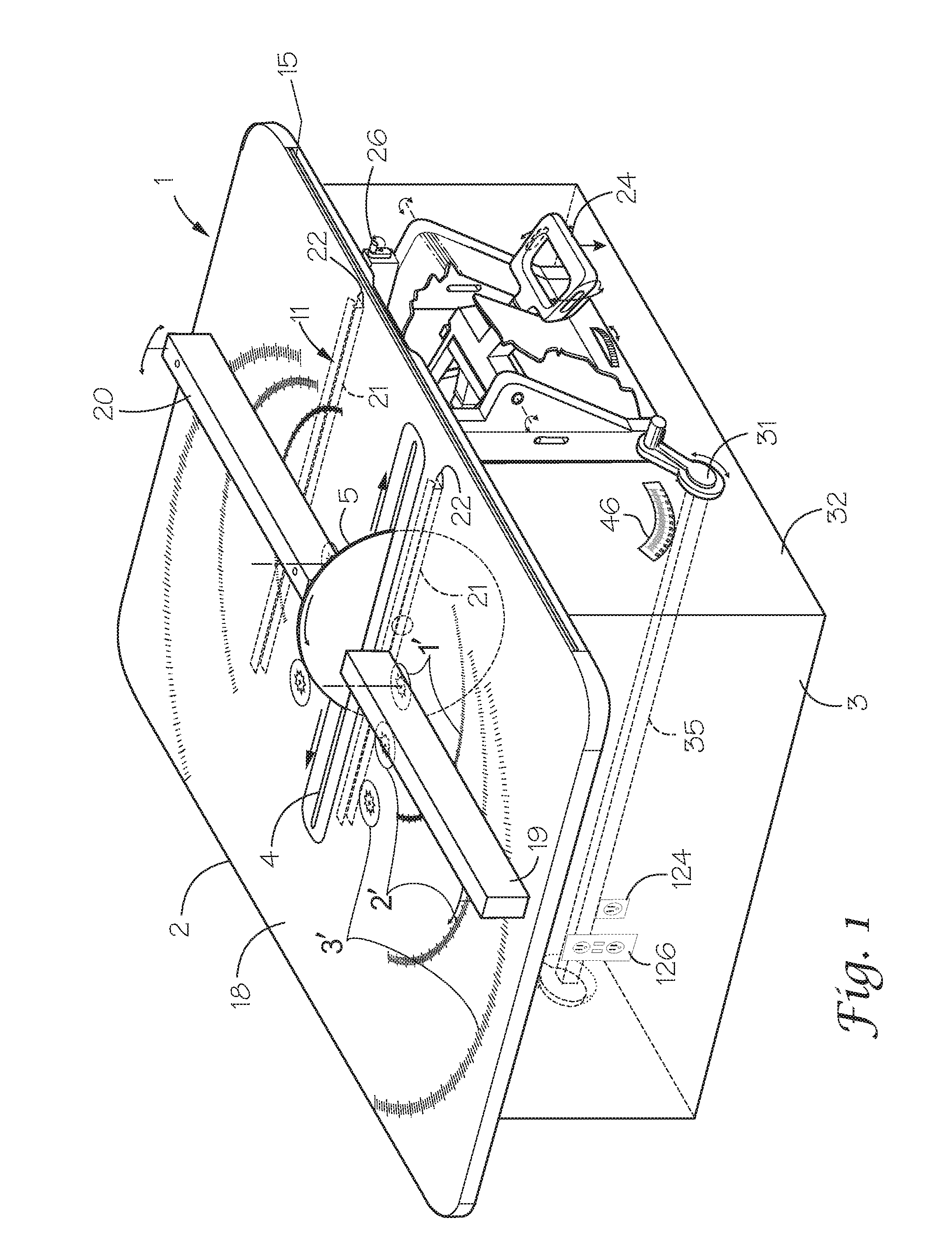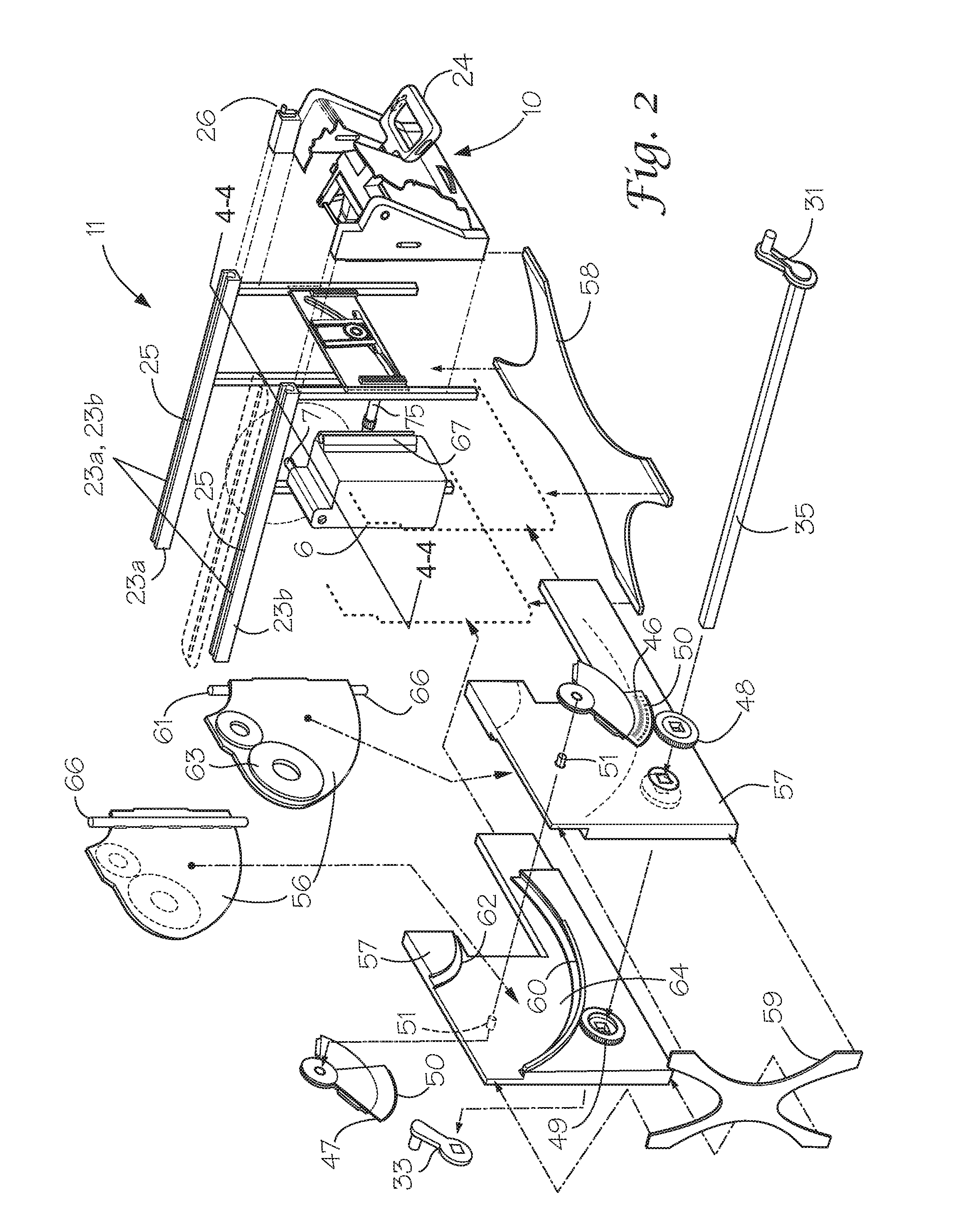Table miter saw
a table miter and miter saw technology, which is applied in the field of table miter saws, can solve problems such as errors in cutting cuts, and achieve the effect of precise miter
- Summary
- Abstract
- Description
- Claims
- Application Information
AI Technical Summary
Benefits of technology
Problems solved by technology
Method used
Image
Examples
Embodiment Construction
[0069]FIG. 1 shows a saw 1 having a table saw form factor while functioning as an improved miter saw. The improved miter saw has table top 2 supported by frame 3 with an elongate slot 4 arranged near the center of the table top to receive rotating blade 5. The blade 5 is attached to a motor 6 below the table top 2 via an extended motor shaft 7, whereby the motor rotationally drives the blade. The motor 6 and blade 5 are arranged within a motor assembly 8 that is connected to a tilt plate assembly 9 that provides for angular adjustment of the blade. Handle assembly 10 is attached to the motor assembly 8 to raise and lower the blade 5 for height adjustment thereof. The combination of motor 6 and blade 5 and the motor assembly 8 are moved longitudinally below the table top 2 by attaching the tilt plate assembly 9 and handle assembly 10 to the table by a carriage assembly 11. By this arrangement the saw 2 can function as a miter saw or a table saw.
[0070]The table top 2 shown in FIG. 1 m...
PUM
| Property | Measurement | Unit |
|---|---|---|
| diameter | aaaaa | aaaaa |
| diameter | aaaaa | aaaaa |
| angle | aaaaa | aaaaa |
Abstract
Description
Claims
Application Information
 Login to View More
Login to View More - R&D
- Intellectual Property
- Life Sciences
- Materials
- Tech Scout
- Unparalleled Data Quality
- Higher Quality Content
- 60% Fewer Hallucinations
Browse by: Latest US Patents, China's latest patents, Technical Efficacy Thesaurus, Application Domain, Technology Topic, Popular Technical Reports.
© 2025 PatSnap. All rights reserved.Legal|Privacy policy|Modern Slavery Act Transparency Statement|Sitemap|About US| Contact US: help@patsnap.com



